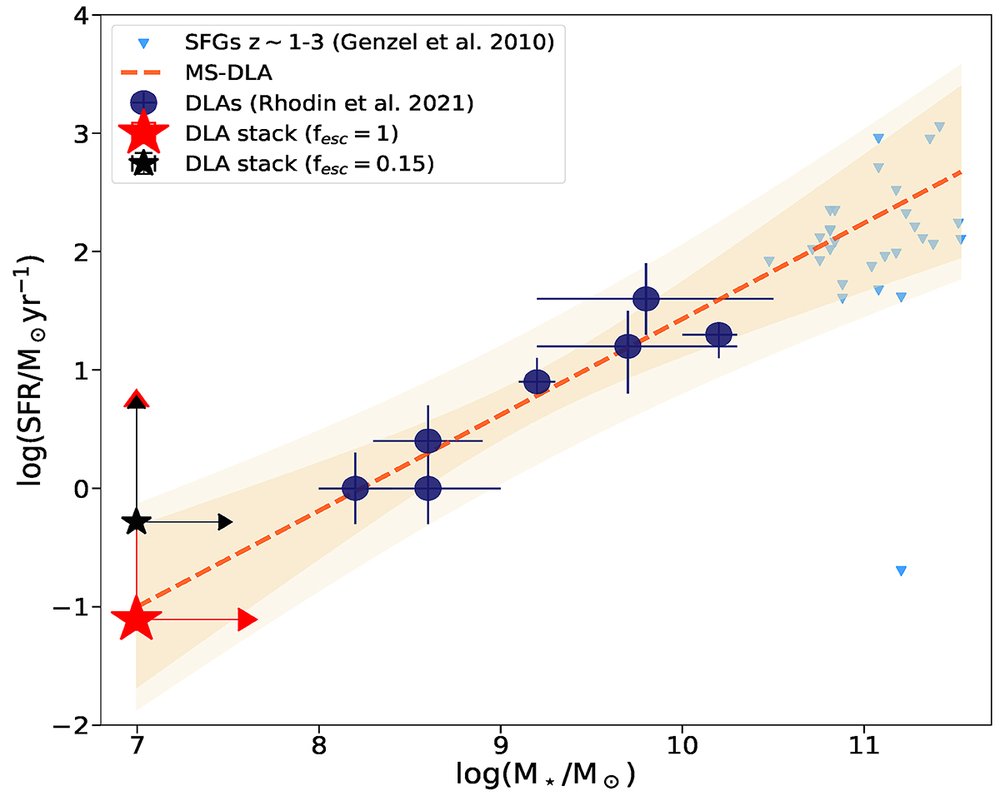RESEARCH HIGHLIGHTS | IIA
TweetStar formation in neutral hydrogen gas reservoirs at cosmic noon
RAVI JOSHI

We aim to constrain the average star formation associated with neutral hydrogen gas reservoirs at cosmic noon. We used a unprecedented sample of 1716 high-column-density, damped Ly-α absorbers (DLAs) from the Sloan Digital Sky Survey with log(N(H I)/cm‑2) ≥ 21. This allowed us to generate the average Ly-α emission spectrum associated to DLAs, free from any emission coming from the background quasar. We measured the Lyα emission at > 5.8σ level with a luminosity of 8.95 ± 1.54 × 1040 erg s‑1 (corresponding to about 0.02 L⋆ at z ∼ 2 ‑ 3) in systems with average log(N(H I) /cm‑2) of ≈21.2 and at a median redshift of z ∼ 2.64. The peak of the Lyα emission is apparently redshifted by ∼300 km s‑1 relative to the absorption redshift, which appears to be due to suppression of blue Ly-α photons by radiative transfer through expanding gas. We infer that DLAs form stars with an average rate of (0.08 ± 0.01)/fescM⊙ yr‑1; namely, ≈ (0.54 ± 0.09) M⊙ yr‑1 for a typical escape fraction (fesc = 0.15) of Lyman-α emitting galaxies. DLA galaxies follow the main sequence of star-forming galaxies at high redshift, suggesting that the DLA population is dominated by the lower mass end of Lyman-α emitting galaxies.